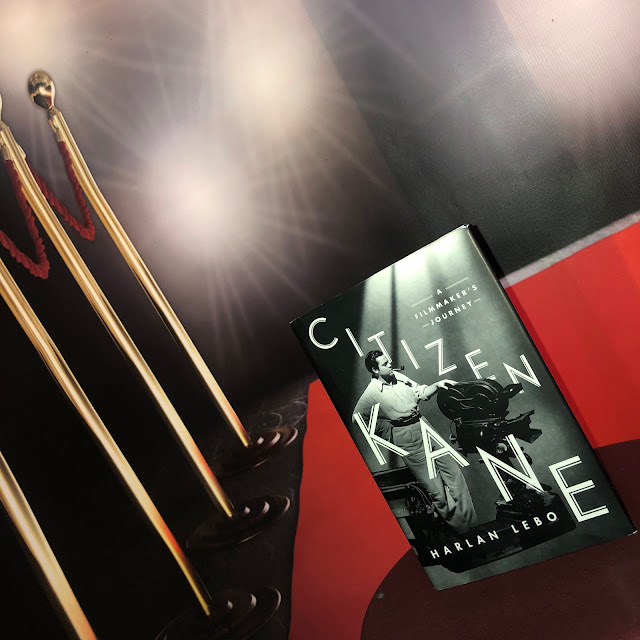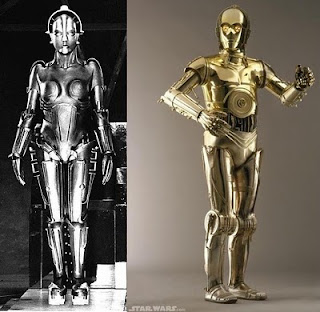BOOK REVIEW: CITIZEN KANE – A FILMMAKER’S JOURNEY BY HARLAN LEBO
A MINOR SPOILER BOOK REVIEW by CHRIS MICH:
CITIZEN KANE – A FILMMAKAKER’S JOURNEY by HARLAN LEBO (2016)
It’s terrific! End of Review. jk
 |
| Photo by Chris Mich |
“It’s terrific!” is the lame tagline RKO gave Orson Welles’ first feature film, Citizen Kane (1941). After all the trials and tribulations Welles endured while making the film, courtroom-esque drama of dealing with the Hearst conglomerate in getting the film released to the public, it’s critically-acclaimed premiere….this was the best they could do…apparently. Harlan Lebo, a senior fellow at the Center for the Digital Future in the USC Annenberg School for Communication and Journalism, tells much, much more on this story and many more stories swirling around the greatest film ever made.
Here’s the trailer for the movie:
Lebo neatly arranges his book in 2 main sections. Part One is about Welles’ rising star in theater and film and how that led him to the most ridiculous contract ever laid out in Hollywood involving complete creative control of his first film. Welles, ignorant of the tried-and-true methods of Hollywood narrative filmmaking, went on to do things his way, with his own people and produced a motion picture that made everyone in its day rethink the possibilities of cinema. Of course, there was plenty of controversy and jealousy – but that just makes the history even more entertaining to read.
My favorite sections of this Part One is the tenuous screenwriting partnership Welles had with Herman J. Mankiewicz and the productive, mentorship-like partnership he found in cinematographer Gregg Toland. Welles wanted the camera to be treated like the human eye – seeing multiple things in focus at once or being placed at any angle, even from the floor’s perspective. This is nothing new to us in this cell phone, social media age. But back in the 1930s, when cameras were monstrosities (like they demonstrated at the 2023 Academy Awards show and referenced Citizen Kane), shots from a shoestring angle were considered impossible – until Toland and Welles cut holes in the floor or built sets on stilts. That’s because Toland was hungry to advance the art form and Welles didn’t like hearing “It can’t be done.” And this mindset was not appreciated by many of their film peers initially, but they pushed on anyway. From Lebo’s book, p. 81…
“I thought you could do anything with the camera that the eye can do, that the imagination could do,” said Welles. "In the film business you’re taught all the things the cameraman doesn’t want to attempt for fear he will be criticized for having failed. In this case I had a cameraman who didn’t care if he was criticized if he failed, and I didn’t know there were things you couldn’t do. So anything I could think up in my dreams, I attempted to photograph.”
What a great reminder to creatives of all ages!
Part Two deals mainly with the ridiculousness of William Randolph Hearst and his organization doing everything it could to not only stop Citizen Kane from being released but being destroyed forever…every last answer print and negative. Obviously, we know who won…even though the film limped at the box office in its initial run. But film critics at its release and the many years following called out its importance and unparalleled artistic achievement. Lebo ties this all up neatly and continues to touch upon the timeline from the release to modern-day on how Citizen Kane garnered and kept its reputation as the pinnacle of Hollywood movie-making by influencing film movements and filmmakers from Truffaut to Spielberg. Lebo also calls out the film lists it topped, auction of its props, and other nice details.
But Lebo doesn’t stop there! The back section of the book is chock full of Kane resources including (but not limited to) its original budget, full list of the movie credits (both on-screen and uncredited), interviews with Toland and the film’s composer Bernard Herrmann.
Citizen Kane has popped up on Digging Star Wars several times: in the collaboration I did with Phil Congleton on the Film366 project , Phil’s Fahrenheit 451 (1966) review, and previous guest W. Scott Prestwood’s Top 10 Film Recommendations. But these are only brushes with greatness. Lebo’s book is THE book to read in order to fully appreciate Welles’ masterpiece. I highly recommend it.
Special thanks to Out of the Past blogger Raquel Stecher for hosting the 2023 Classic Film Reading Challenge. This post is an official entry. To join us in this fun summer endeavor, visit her blog for more details.
#classicfilmreading


Great review! I thoroughly enjoyed the movie "Mank" and this book seems equally, if not more interesting!
ReplyDeleteThanks, Ann! I need to get around to watching MANK - heard great things. Thanks again for reading my post. Hope all is well with you and yours! :-)
DeleteProbably one of the best "making of" stories out there! Thanks for your review. I have another book about the making of Citizen Kane but this one sounds much more interesting. And I love when an author includes lots of interesting backmatter which it sounds like the author does here!
ReplyDeleteThanks, Raquel. This is a great read.
Delete